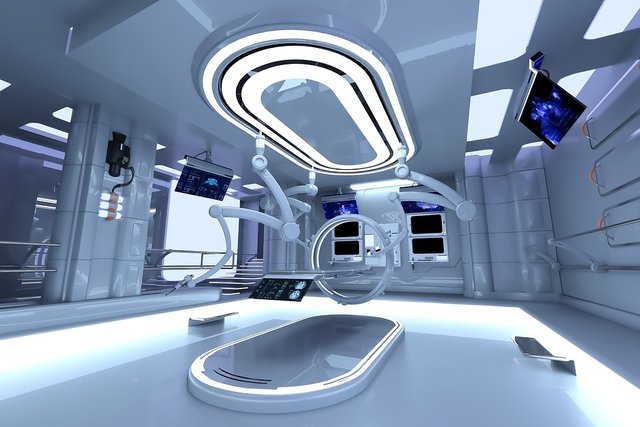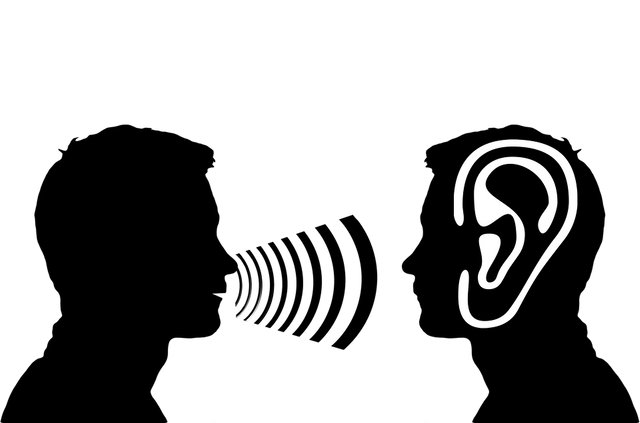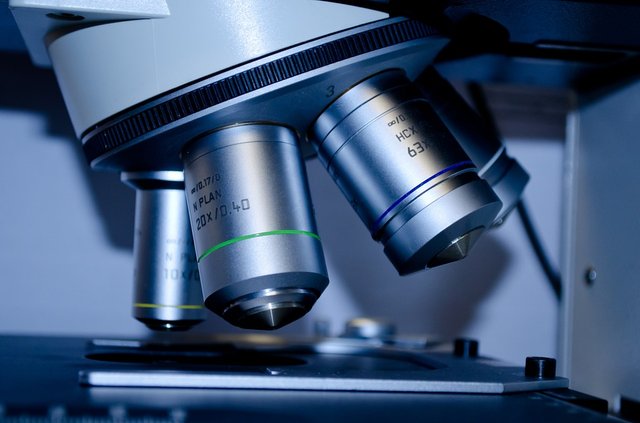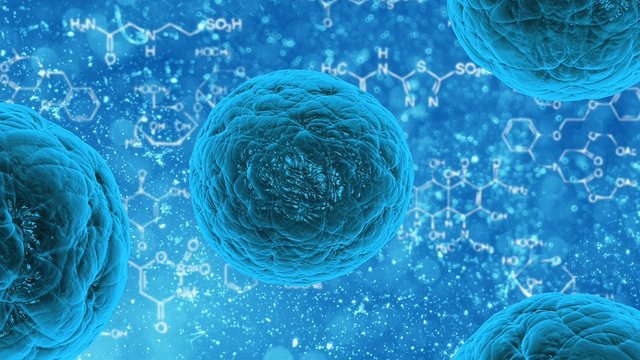Why we need biomedical engineering
The other day I was walking in campus and I’ve overheard a conversation that horrified me. Some students were discussing if it was right to lower the budget for research. Their argument was that since research is “wasting a lot of money”, tightening the budget will force scientists to be more effective on how they spend the research money.
In that moment I’ve imagined a lot of students and scientists I know that work tirelessly, they generally work many more hours than what they are paid for. They come to the lab nights and weekends to feed their cells and run experiments. They don’t get an extra penny for doing this but the perception of people was clearly misaligned with reality. People probably think that scientists spend their time messing around, chasing butterflies and playing with lab rats.
What I was hearing was upsetting me but as for everything in life, one has to focus on himself and always ask the question: what can I do about it? If the answer is nothing, then getting upset won’t change much. In this case there was something I could do about it and I am taking action right now.
I guess the main problem is communication, as scientists we are too often too immersed into our own world and we forget to let other people understand why we do what we do. Today I want to give you an example, I will show you why we really need to engineer more artificial organs.
I don’t want to start with opinions so let’s start with numbers, let’s locate a reliable source of stats regarding organ transplants, a good one is the website of Data from the United Network for Organ Sharing (UNOS): https://www.organdonor.gov/statistics-stories/statistics.html
We can see that in 2016, there were 15,947 Donors, 33,612 transplants (a single donor can donate multiple organs), but 119,362 patients on the waiting list https://www.organdonor.gov/statistics-stories/statistics/data.html
While it is encouraging to see that every year we can perform more organ transplants, thus saving more lives, the worrying fact is that the waiting list is increasing at a faster pace.
As of august 2017 there were more than 116,000 patients waiting for an organ transplant but only a bit more than 12,000 donors. It is a race against time because patients on the waiting list are in critical conditions. On average 20 patients die every day while waiting for a transplant, in 2016 alone 7,000 patients died because they did not receive an organ transplant on time.
Obviously, relying only on the generosity of organ donors won’t narrow the gap between organ supply and demand. We really need the help of biomedical engineering, this is a very broad term that encompass a vast range of scientific disciplines. As a scientist in biomedical engineering you have to wear several hats, you have to understand about cell and molecular biology, biochemistry, mechanics, pathology, immunology and you have to learn to speak the same language of surgeons otherwise they will ignore 90% of what you say. It is difficult to obtain this skillset just from your education, but, luckily today we have several tools at our disposal to share knowledge between scientists from different disciplines.
If we were to tighten the support to research, and start choosing to support only selected disciplines it would have repercussions on all fields. Even the most popular research fields rely heavily on other disciplines (I don’t want to name them to not fuel debates that may go off-topic). So today is the effort of the whole scientific community that enables researchers of different fields to tap into valuable knowledge almost effortlessly and very rapidly. So, this is to say that it’s critical to support as much research as possible in the widest range of fields possible.
If you were to walk in any regular research lab you would see that scientists and students do not get a plentiful supply of funds. They often have to borrow reagents because they don’t have enough money or in most cases they have to make their own reagents from scratch.
But it’s not all about money, if you do research you know that often to get anything done you have to swim into a mud of bureaucracy. If you have a cool idea you can’t start working on it right away but first you have to obtain funds to unlock financial resources. Ironically, there are scientists that have to spend more time writing grants and reporting progress rather than doing the actual experiments.
If we look at the past we can see that some of the most striking discoveries were done by heretics, scientists that dared think outside the box and use new and creative approaches to get things done. Unfortunately, because of the way we obtain funding to perform our research today, we often have to show a more conservative approach, if you have a crazy idea, no matter how innovative it can be, it will hardly get funded if it appears too unrealistic. The problem is that you don’t know if something can work until you try, and for that you need funding, a typical catch-22 situation.
Anyway, I am going off-topic already, let’s get back to the issue of organ transplantation. In the last few years in biomedical engineering there were considerable efforts in designing strategies to replace or heal diseased organs (Khademhosseini & Langer, 2016). For instance, a large number of biomaterials have been designed (Khademhosseini & Langer, 2016; Wronska, O’Connor, Tilbury, Srivastava, & Wall, 2016) , each with the aim of recapitulating features of the target tissue. For example, we designed biomaterials suitable for muscle (Qazi, Mooney, Pumberger, Geibler, & Duda, 2015), cartilage (Pascher et al., 2004), bone (Yi, Ur Rehman, Zhao, Liu, & He, 2016). Usually the approach is to use these biomaterials to deliver also stem cells (Sart, Agathos, & Li, 2013), in this case we generally refer to them as “scaffold” as these biomaterials will support cell growth, will direct stem cell differentiation and guide the formation of new tissue.
However, to produce an entire synthetic organ there are several challenges to overcome. Organs have generally very complex ultrastructures, hundreds of different cell types coexist in an organized way and their behavior is directed by molecular cues inherent of that tissue. To complicate things even further, nature came up with structures that seem to defy the laws of physics, some tissues are both strong and tough, very porous and vascularized, yet strong (Wegst, Bai, Saiz, Tomsia, & Ritchie, 2015). There is a high degree of sophistication in biological tissues that is very difficult to recapitulate artificially.
In recent years we have made significant progress in the design of scaffolds with complex structures and we are also learning which materials offer the most advantages in terms of safety and biological activity. Another issue consists also in manufacturing enough stem cells that can regenerate an entire tissue. The problem here is that millions of cells are needed but we cannot expand them indefinitely as each cell division affects their regenerative potential (Takahashi & Yamanaka, 2006). Even if we are making progress in finding new sources of stem cells another issue arises. Cells are living entities, they need nutrients to survive and they produce waste. If you were to amass millions of cells into a scaffold most of them would die within hours because today is still very difficult to manufacture scaffolds with adequate fluid transport capabilities to sustain the metabolic needs of millions of cells.
As an alternative approach, we started to decellularize entire organs from animal sources. This consists in performing chemical, physical and biologic treatments on organs to strip away all the cells and any other tissue components that may cause immunogenic reactions (Hoshiba et al., 2016). It was found that decellularized tissues maintain their ultrastructure, vascularity and also biological cues that can guide tissue regeneration (Ott et al., 2008). Studies found that these decellularized tissues can be safely implanted and over time can be repopulated by the host’s cells and facilitate regeneration of tissues (Ott et al., 2008). However, there are limitations to this approach, obviously there is always the risk of transmission of disease and even if using animal sources for decellularization of organs it would not be a strategy that could be implemented on a large scale. In fact, even in this case the availability of donors would be limited and the costs would be exorbitant (Huerta, Varshney, Patel, Mayo, & Livingston, 2016).
We need more heretics in the scientific community that can think outside the box and come up with new approaches. Unfortunately, there is a hemorrhage of talents from research, especially from academia. This is due especially because of inadequate funding and extremely low rewards for hard work. From my experience I see so often the enthusiasm of bright and energetic students being doused by the realization that doing research will be an up-hill battle, constantly scrapping for funding, working extra-long hours and very little recognition or monetary rewards. I don’t blame them if when they decide they need to start a family they decide to flee to industry for more financial stability. Generally, people that leave academia are people with talent and experience, a great loss for research caused by inadequate funding and lack of opportunity.
References
- Hoshiba, T., Chen, G., Endo, C., Maruyama, H., Wakui, M., Nemoto, E., … Tanaka, M. (2016). Decellularized extracellular matrix as an in vitro model to study the comprehensive roles of the ECM in stem cell differentiation. Stem Cells International, 2016. https://doi.org/10.1155/2016/6397820
- Huerta, S., Varshney, A., Patel, P. M., Mayo, H. G., & Livingston, E. H. (2016). Biological Mesh Implants for Abdominal Hernia Repair. JAMA Surgery, 151(4), 374. https://doi.org/10.1001/jamasurg.2015.5234
- Khademhosseini, A., & Langer, R. (2016). A decade of progress in tissue engineering. Nature Protocols, 11(10), 1775–1781. https://doi.org/10.1038/nprot.2016.123
- Ott, H. C., Matthiesen, T. S., Goh, S. K., Black, L. D., Kren, S. M., Netoff, T. I., & Taylor, D. A. (2008). Perfusion-decellularized matrix: Using nature’s platform to engineer a bioartificial heart. Nature Medicine, 14(2), 213–221. https://doi.org/10.1038/nm1684
- Pascher, A., Palmer, G. D., Steinert, A., Oligino, T., Gouze, E., Gouze, J. N., … Ghivizzani, S. C. (2004). Gene delivery to cartilage defects using coagulated bone marrow aspirate. Gene Therapy, 11(2), 133–141. https://doi.org/10.1038/sj.gt.3302155
- Qazi, T. H., Mooney, D. J., Pumberger, M., Gei??ler, S., & Duda, G. N. (2015). Biomaterials based strategies for skeletal muscle tissue engineering: Existing technologies and future trends. Biomaterials, 53(2015), 502–521. https://doi.org/10.1016/j.biomaterials.2015.02.110
- Sart, S., Agathos, S. N., & Li, Y. (2013). Engineering stem cell fate with biochemical and biomechanical properties of microcarriers. Biotechnology Progress, 29(6), 1354–1366. https://doi.org/10.1002/btpr.1825
- Takahashi, K., & Yamanaka, S. (2006). Induction of Pluripotent Stem Cells from Mouse Embryonic and Adult Fibroblast Cultures by Defined Factors. Cell, 126(4), 663–676. https://doi.org/10.1016/j.cell.2006.07.024
- Wegst, U. G. K., Bai, H., Saiz, E., Tomsia, A. P., & Ritchie, R. O. (2015). Bioinspired structural materials. Nature Materials, 14(1), 23–36. https://doi.org/10.1038/nmat4089
- Wronska, M. A., O’Connor, I. B., Tilbury, M. A., Srivastava, A., & Wall, J. G. (2016). Adding Functions to Biomaterial Surfaces through Protein Incorporation. Advanced Materials, 5485–5508. https://doi.org/10.1002/adma.201504310
- Yi, H., Ur Rehman, F., Zhao, C., Liu, B., & He, N. (2016). Recent advances in nano scaffolds for bone repair. Bone Research, 4(September). https://doi.org/10.1038/boneres.2016.50







Certo che la ricerca è fondamentale...lo è sempre stato e sempre lo sarà! Ti lamenti della situazione americana...ma di quella italiana ne vogliamo parlare? Mi sembra di capire che il divario, in termini culturali , sia enorme...purtroppo per tutti.
Quello si chiamerebbe mettere il dito nella piaga! Purtroppo siamo parecchio indietro per quanto riguarda la ricerca da noi in Italia. Abbiamo i denti ma non il pane, cosi lasciamo partire tutti quelli piu' in gamba
We can always take a few uh ...
unwilling donors.
We will save more lives than are "taken" so its at least worth a thought.
efficiency at its finest.
Money always seems to be more important than lives
There is a lot can be improved, so many resources (time, effort and money) are unfortunately spent just for bureaucracy. Thinking about the cost of a therapy is also important in my opinion otherwise, only a few people will be able to afford it. Ideally, we want to create cheap options so they would be available to everyone.
"create cheap options"
The majority of options are inherently cheap, the problem is the massive inefficiencies of market systems.
"only a few people will be able to afford it"
We have more than enough to go around, there is no need to shift the burden onto those who need it
I think this is a sensitive topic and probably it may deserve a post on its own. I am interested in hearing your view and if you were to make a post about it I would gladly read it
just look up anarchist spain, they had it right
distribution of medical devices unfortunately is a lucrative business, that's where most money is wasted. You are right, the government could easily subsidize medical expenses, unfortunately they spend our money in other ways (eg. wars, saving banks). Especially in the US this is a major issue
The government is just another player in the market. Government regulations are not what will change this
I agree with the need for scientific research and innovation. However, in the US at least, research funding has become a ridiculous, political game.
I guess that is a general aspect of our society, where there is money there is politics, but you are right, unfortunately there is a lot of politics in choosing which research will be funded
The work of scientist cannot be underestimated, imagine the world without science, we would still be living in the stone age by now. Thank God for science
for me you touched here a very sensitive topic.
I do not talk about money, I talk about organ donation. From my standpoint I decided for myself not being an organ donator. I was digging deep into this topic and did some personal research on that - and that was what came out. I wrote a very very long article about it in my very beginning here on steemit.
So, searching for non human organs instead seems to be a better thing than using the ones of other humans. I must read your article more in silence, which I will do. For now I wanted to give you my feedback.
I would like to put it that way: I prefer a scientific solution because what is happening right now, is in my view horrific.
Thank you for your comment, I also think that if we rely only on donors we will continue to have a gap between organ supply and demand. Engineering artificial organs may solve a lot of issues.
Wow, it's really sour spot for me. I started studied Bioinformatics, my target was to create and find ways to help people, but throughout the degree I've found out that this field really doesn't reward, so if I want to work on research I'm gonna make the lowest possible salary, while I can work at tech companies and make hundreds of thousand of dollars a year. It's a shame.
Unfortunately this is true, but nobody really cares, just people that work in academia and we are very few.
And getting into the acdemia is also hard, I wish there was something to do about it
While I agree, I think a rigorous grant process is vital to producing good ideas. The construction of good ideas during writing followed by constant criticism during review is an excellent way to get more from the grant money being spent. The harder it is for us scientist, the more we rise to expectations.
I think it's important to find the right balance, maybe they could start introducing funding rounds that support pilot studies to prove feasibility of high risk/high reward studies, I know there are already a few programs like this in the US, unfortunately they are still too few. I think review and planning are important but sometimes you don't know what results you will get until you try. Otherwise the risk is that they will continue to fund projects that are very conservative and just slightly different from previous studies.
Ahh, I see what you're hitting on. This is true and similar to the difference between established businesses and startups. One makes incremental improvements and the other tries to go from zero to sixty with the risk of a crash. Personally in my lab we are taking a lot of risks and allowing a lot of pet projects. This increases total productivity, but decreases productivity towards our funded goals. It's a balancing act, I guess.
I agree, balance is key
So true my Colleague, we are living the fortresses we created by the simple act of non-speaking. There are countless conspiracy theorists in the media while the real experts remain silent. Our Bosses stayed in XIX century with their mindset and gave us the broken system to start with.